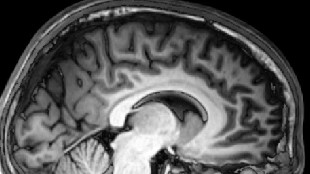Highlights
- •Age and microbiota immaturity account for neonatal susceptibility to GBS meningitis
- •Immature microbiota favors GBS colonization of the neonatal gut lumen and bacteremia
- •Neonatal intestine and choroid plexuses exhibit enhanced permissiveness to GBS
- •Wnt signaling alters polarization of neonatal intestinal and choroid plexus epithelia
Summary
Neonates are highly susceptible to bacterial meningitis as compared to children and adults. Group B streptococcus (GBS) is a major cause of neonatal meningitis. Neonatal meningitis can result from GBS intestinal colonization and translocation across the intestinal barrier (IB). Here, we show that the immaturity of the neonatal intestinal microbiota leads to low resistance to GBS intestinal colonization and permissiveness of the gut-vascular barrier. Moreover, the age-dependent but microbiota-independent Wnt activity in intestinal and choroid plexus (CP) epithelia results in a lower degree of cell-cell junctions’ polarization, which favors bacterial translocation. This study thus reveals that neonatal susceptibility to GBS meningitis results from the age-dependent immaturity of the intestinal microbiota and developmental pathways associated with neonatal tissue growth, which both concur to GBS gut colonization, systemic dissemination, and neuroinvasion. Whereas the activation of developmental pathways is intrinsic to neonates, interventions aimed at maturing the microbiota may help prevent neonatal meningitis.
Introduction
Bacterial pathogens that reach the brain via the systemic circulation cross the blood-brain barrier (BBB) via (1) brain microvessels, also called the BBB per se; and/or (2) the blood-meningeal barrier (BMB); and/or (3) the blood-cerebrospinal fluid (CSF) barrier, which is located at the choroid plexuses (CP) level (Disson and Lecuit, 2012; Lemichez et al., 2010; Saunders et al., 2018). Neonates are more susceptible than adults to bacterial meningitis, and meningitis is a frequent complication of bacteremia in neonates (Kim, 2010). Moreover, the etiologies of bacterial meningitis vary with age: whereas Neisseria meningitidis and Streptococcus pneumoniae are the main causes of meningitis in children and adults, in whom they colonize the nasopharynx, neonatal meningitis is almost exclusively caused by Streptococcus agalactiae (group B streptococcus [GBS]) and Escherichia coli, which are intestinal commensals (Badri et al., 1977; Edmond et al., 2012; Hansen et al., 2004; Tazi et al., 2019). There are two types of neonatal infections: early-onset disease, which occurs in the first week of life, and late-onset disease (LOD) that develops from 7 days to 3 months after birth. In total, 68% of GBS neonatal meningitis cases are LOD (Romain et al., 2018). Whereas GBS-associated early-onset disease results from GBS inhalation during parturition, GBS-associated LOD is thought to require pre- or post-delivery mother-to-child GBS transmission and subsequent intestinal seeding (Bingen et al., 1992; Romain et al., 2018; Tazi et al., 2019). The majority of LODs are due to the capsular serotype III GBS hypervirulent clonal complex CC17 (Tazi et al., 2019, Tazi et al., 2010). Its overrepresentation in LOD cases seems to result from its enhanced capacity to colonize the neonatal gastrointestinal tract and translocate across host barriers (Tazi et al., 2019, Tazi et al., 2010).Neonatal microbiota composition derives from the early opportunistic colonization by the first bacterial species of maternal, food, and environmental origins to which neonates are exposed. The intestinal microbiota matures with age in response to changes and diversification of diet and environmental bacterial sources, until the age of 2 or 3 years in humans (Jain and Walker, 2015; Salazar et al., 2014). The gut microbiota helps adsorb and modify nutrients (Sonnenburg and Bäckhed, 2016) and mediate resistance against intestinal lumen colonization by orally acquired bacteria (Buffie and Pamer, 2013; Keith and Pamer, 2019). The neonatal microbiota is also involved in intestinal homeostasis (Belkaid and Hand, 2014; Hooper et al., 2001; Johansson et al., 2015) and maturation of the immune system (Deshmukh et al., 2014; Gensollen et al., 2016; Khosravi et al., 2014). Moreover, the maternal microbiota has been reported to regulate the tightness of fetal brain microvessels’ junctions (Braniste et al., 2014).Here, we aimed at understanding the reasons for neonatal susceptibility to GBS LOD meningitis. We show that neonatal susceptibility to GBS neonatal meningitis results from a succession of age-dependent, microbiota-dependent, and microbiota-independent factors. We demonstrate that neonatal intestinal microbiota immaturity is associated with decreased resistance to GBS colonization, which favors translocation across the gut barrier. We also identify that neonatal microbiota immaturity is associated with leakiness of the gut vascular barrier (GVB) and higher systemic bacterial load. Finally, we reveal a key role for the microbiota-independent but age-dependent Wnt activity in preventing the full polarization of cell-cell epithelial junctions, which favors bacterial translocation across the intestinal (IB) and CP barriers.







